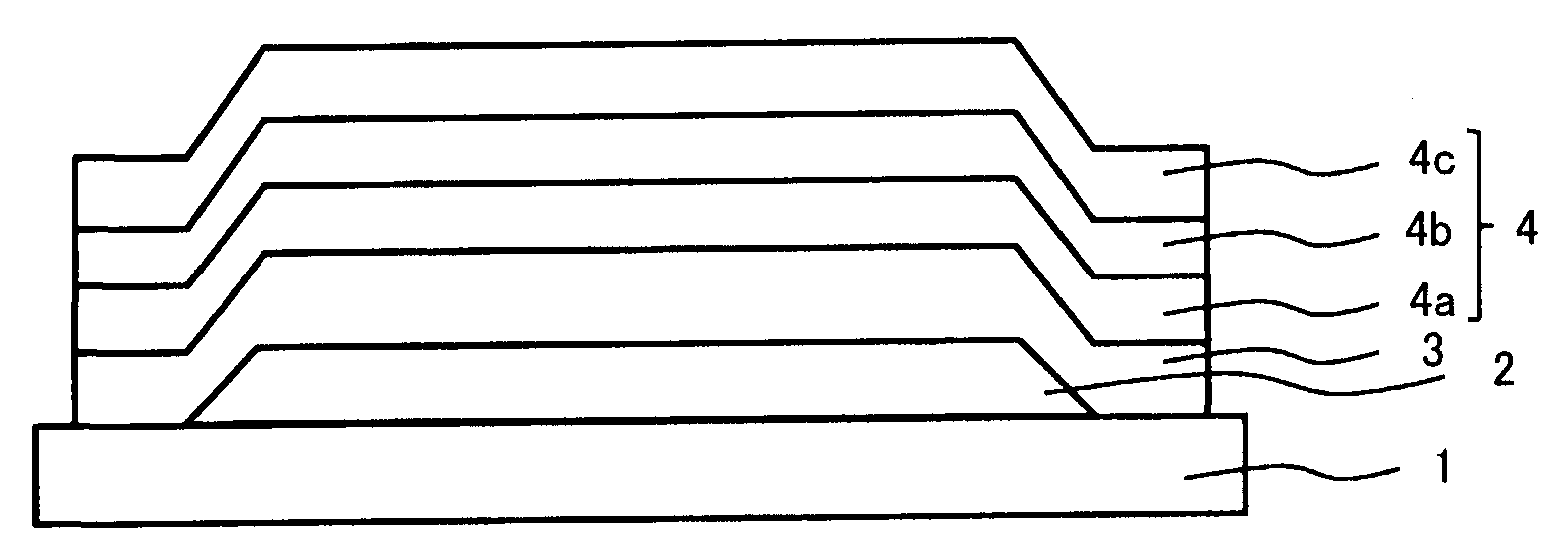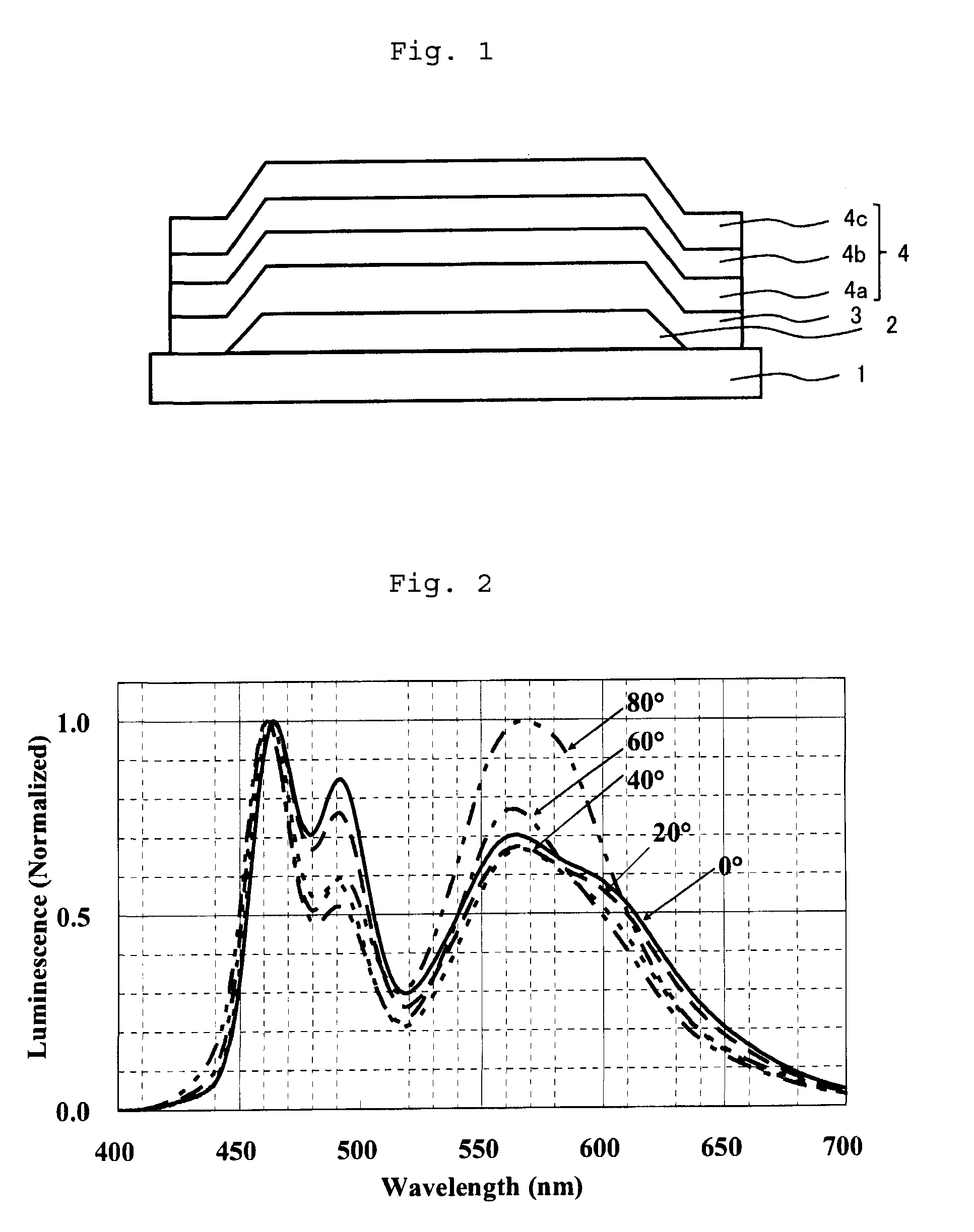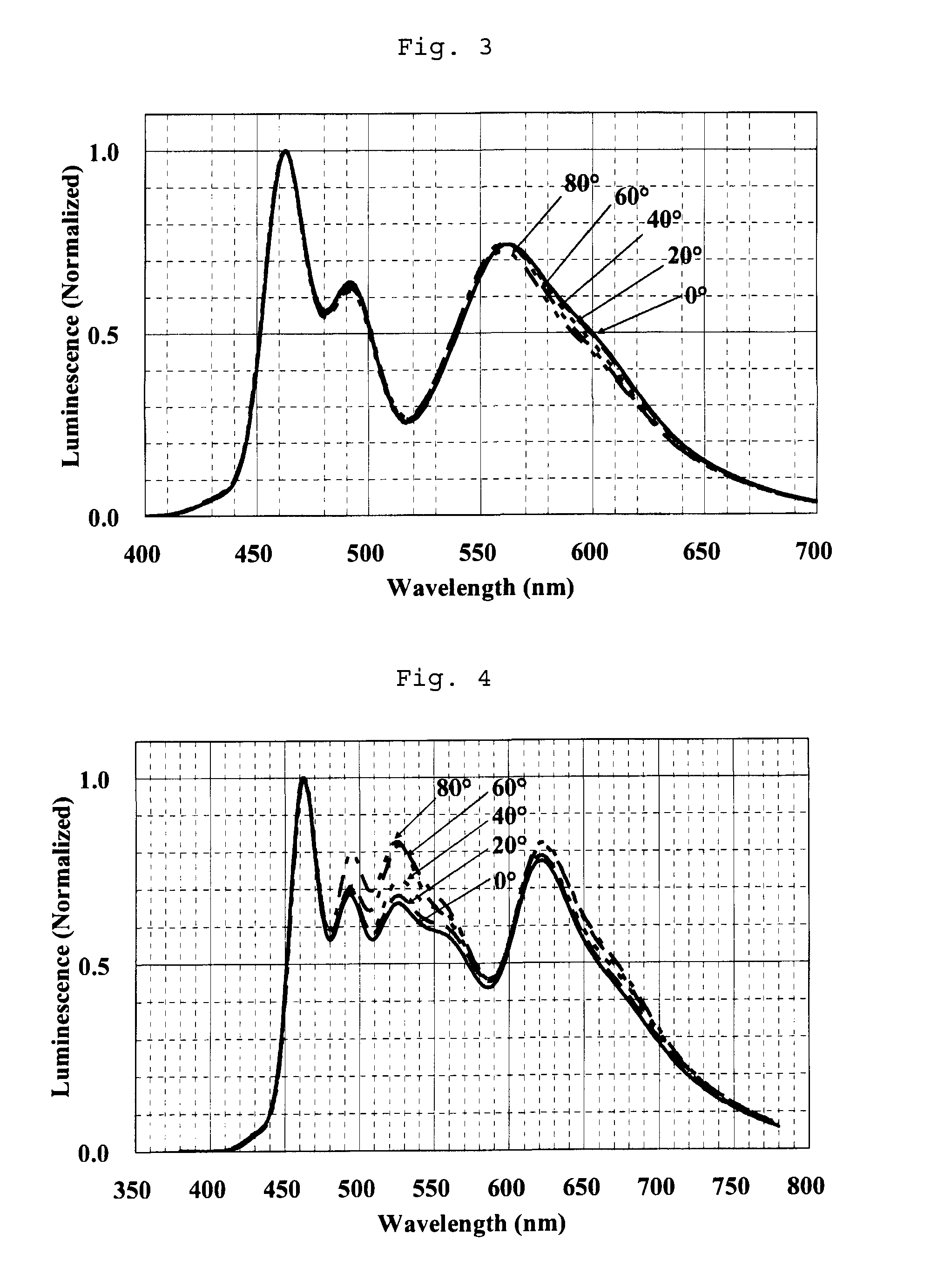Organic electroluminescence element and method of manufacturing the same
- Summary
- Abstract
- Description
- Claims
- Application Information
AI Technical Summary
Benefits of technology
Problems solved by technology
Method used
Image
Examples
example 1
[0072]An organic electroluminescence transparent element having a layer structure as shown in FIG. 1 was prepared by the following method.
(Transparent Substrate 1 and Anode Layer 2)
[0073]First, a glass substrate having formed thereon a patterned transparent electroconductive film (ITO) with a film thickness of 300 nm was subjected to washing treatments in the order of ultrasonic cleaning by pure water and a surfactant, washing with flowing pure water, ultrasonic cleaning by a 1:1 mixed solution of pure water and isopropyl alcohol, and boiling washing by isopropyl alcohol. This substrate was slowly pulled up from the boiling isopropyl alcohol, and dried in isopropyl alcohol vapor, and, finally ultraviolet ozone cleaning was performed.
[0074]This substrate was used as an anode 1 and placed in a vacuum chamber which was evacuated to 1×10−6 Torr. In this vacuum chamber, each molybdenum boat filled up with a vapor deposition material and a vapor deposition mask for forming a film in a pre...
example 2
[0093]Onto ITO (100 nm) of the cathode layer of the transparent element prepared in Example 1, one where titanium oxide (manufactured by Kanto Chemical Co. Inc.: anatase-type; 0.1-0.3 micrometers in particle size) and fluorinated oil (demnum S-20, manufactured by Daikin Industries, Ltd.) were dewatered, mixed, and defoamed at a low dew point was applied directly, to form an optical diffusion reflection layer having a film thickness of 200 micrometers.
[0094]This was sealed with another glass plate using an UV curing resin, to obtain an organic EL element.
[0095]FIG. 3 shows a graph of the result of evaluating angle dependability of a spectrum of this element.
[0096]As is clear from comparison between FIGS. 2 and 3, in the case where the optical diffusion reflection layer is prepared, it is confirmed that the angle dependability of the spectrum is controlled and it looks the same in color at any angle (in Example 2, FIG. 2),
[0097]Further, external quantum efficiency at a current density...
example 3
[0098]By way of a technique similar to that in Example 1, each electrode layer and a light emitting unit were formed to laminate four light emitting units through a second charge generation layer. Further, the optical diffusion reflection layer was formed by way of a technique similar to that in Example 2, to prepare the organic EL element of a multi-photon structure.
[0099]The above-mentioned second charge generation layer was such that, using Liq as the electron supply substance, DPB:Liq=75:25 were subjected to film formation to have a film thickness of 17 nm, on which an aluminum (Al) film having a film thickness of 0.5 nm was formed. Further, MoO3, as an electron accepting substance, was subjected to film formation independently to have a film thickness of 2 nm and formed between the respective units.
[0100]A layer structure of this element is simplified and shown ITO(300 nm) / MoO3(5 nm) / / first unit (blue) [NS21(15 nm) / EB43:EB52 (30 nm, 98.8:1.2) / BAlq (5 nm)] / / DPB:Liq(17 nm, 75:25)...
PUM
| Property | Measurement | Unit |
|---|---|---|
| Work function | aaaaa | aaaaa |
| Permeability | aaaaa | aaaaa |
| Transparency | aaaaa | aaaaa |
Abstract
Description
Claims
Application Information
 Login to View More
Login to View More - R&D
- Intellectual Property
- Life Sciences
- Materials
- Tech Scout
- Unparalleled Data Quality
- Higher Quality Content
- 60% Fewer Hallucinations
Browse by: Latest US Patents, China's latest patents, Technical Efficacy Thesaurus, Application Domain, Technology Topic, Popular Technical Reports.
© 2025 PatSnap. All rights reserved.Legal|Privacy policy|Modern Slavery Act Transparency Statement|Sitemap|About US| Contact US: help@patsnap.com



